Citatio: Thesaurus Linguarum Hethaeorum digitalis, hethiter.net/: TLHdig KUB 26.81 (2021-12-31)
|
|
ANNOTATION STATUS |
| … | ]x⸢MEŠ?⸣ | … |
|---|---|---|
Vs. I 2′ ⸢Ù⸣sicand:CNJadd;
to sleep:;
sleep:{(UNM)}2 A-NA ⸢DUMU⸣.M[EŠ?
| ⸢Ù⸣sic | … | A-NA ⸢DUMU⸣.M[EŠ? |
|---|---|---|
| and CNJadd to sleep sleep {(UNM)} |
Vs. I 3′ ták-ki-iš-ke-⸢et⸣(-)[
Vs. I 4′ ZI-nisoul:D/L.SG.C pé-ra-a[nbefore:;
house:{NOM.SG.N, ACC.SG.N, STF, D/L.SG, NOM.PL.N, ACC.PL.N}
| ZI-ni | pé-ra-a[n |
|---|---|
| soul D/L.SG.C | before house {NOM.SG.N, ACC.SG.N, STF, D/L.SG, NOM.PL.N, ACC.PL.N} |
Vs. I 5′ a-aš-šugood:{NOM.SG.N, ACC.SG.N, NOM.PL.N, ACC.PL.N, STF, ADV};
belongings:{NOM.SG.N, ACC.SG.N, NOM.PL.N, ACC.PL.N, STF};
column:{LUW.NOM.SG.N, LUW.ACC.SG.N} me-mi-iš-k[e-
| a-aš-šu | |
|---|---|
| good {NOM.SG.N, ACC.SG.N, NOM.PL.N, ACC.PL.N, STF, ADV} belongings {NOM.SG.N, ACC.SG.N, NOM.PL.N, ACC.PL.N, STF} column {LUW.NOM.SG.N, LUW.ACC.SG.N} |
Vs. I 6′ ⸢AMA⸣-an-ni DUMU-iz-ni x[
| ⸢AMA⸣-an-ni | DUMU-iz-ni | x[ |
|---|---|---|
Vs. I 7′ iš-tar-ni-šu-um-me a-aš-ši-[
| iš-tar-ni-šu-um-me | |
|---|---|
Vs. I 8′ DUMU.LÚ.U₁₉.LU-⸢UT-TI⸣-zasichuman:{(UNM)}3 nuCONNn ma-a-a[nas:
| DUMU.LÚ.U₁₉.LU-⸢UT-TI⸣-zasic | … | nu | ma-a-a[n |
|---|---|---|---|
| human {(UNM)} | CONNn | as |
Vs. I 9′ ku-e-e[lwhich:REL.GEN.SG;
who?:INT.GEN.SG ] ⸢ku⸣-e-da-niwhich:REL.D/L.SG;
who?:INT.D/L.SG [
| ku-e-e[l | … | ⸢ku⸣-e-da-ni | … |
|---|---|---|---|
| which REL.GEN.SG who? INT.GEN.SG | which REL.D/L.SG who? INT.D/L.SG |
Vs. I 10′ nuCONNn Ú-⸢UL⸣not:NEG x x? šu-um-me-ešsic-m[a(-)4
| nu | Ú-⸢UL⸣ | x | x? | … | |
|---|---|---|---|---|---|
| CONNn | not NEG |
Vs. I 11′ ⸢ku⸣-i-e-ešwhich:{REL.NOM.PL.C, REL.ACC.PL.C};
who?:{INT.NOM.PL.C, INT.ACC.PL.C} A-NA DUTU-ŠI‘my sun’:{D/L.SG, D/L.PL, ALL} k[u?-
| ⸢ku⸣-i-e-eš | A-NA DUTU-ŠI | |
|---|---|---|
| which {REL.NOM.PL.C, REL.ACC.PL.C} who? {INT.NOM.PL.C, INT.ACC.PL.C} | ‘my sun’ {D/L.SG, D/L.PL, ALL} |
Vs. I 12′ x-an-ni5 DUMU-an-nichildhood:D/L.SG a-x[
| x-an-ni | … | DUMU-an-ni | a-x[ |
|---|---|---|---|
| childhood D/L.SG |
Vs. I 13′ [k]u-⸢i⸣-e-ešwhich:{REL.NOM.PL.C, REL.ACC.PL.C};
who?:{INT.NOM.PL.C, INT.ACC.PL.C} BE-LUḪI.Alord:{(UNM)} [
Ende Vs. I
| [k]u-⸢i⸣-e-eš | BE-LUḪI.A | … |
|---|---|---|
| which {REL.NOM.PL.C, REL.ACC.PL.C} who? {INT.NOM.PL.C, INT.ACC.PL.C} | lord {(UNM)} |
Rs. IV 1 [EG]IR-iz-zi-uš-ša ku-⸢i⸣-e-ešwhich:{REL.NOM.PL.C, REL.ACC.PL.C};
who?:{INT.NOM.PL.C, INT.ACC.PL.C} [
| [EG]IR-iz-zi-uš-ša | ku-⸢i⸣-e-eš | … |
|---|---|---|
| which {REL.NOM.PL.C, REL.ACC.PL.C} who? {INT.NOM.PL.C, INT.ACC.PL.C} |
Rs. IV 2 [I]GI-zi-uš-ša ku-i-e-⸢eš⸣which:{REL.NOM.PL.C, REL.ACC.PL.C};
who?:{INT.NOM.PL.C, INT.ACC.PL.C} LÚMEŠman:{(UNM)};
manhood:{(UNM)};
:{PNm(UNM)} x[6
| [I]GI-zi-uš-ša | ku-i-e-⸢eš⸣ | LÚMEŠ | x[ | … |
|---|---|---|---|---|
| which {REL.NOM.PL.C, REL.ACC.PL.C} who? {INT.NOM.PL.C, INT.ACC.PL.C} | man {(UNM)} manhood {(UNM)} {PNm(UNM)} |
Rs. IV 3 [E]GIR-iz-zi-uš-ša ku-i-⸢e⸣-e[šwhich:{REL.NOM.PL.C, REL.ACC.PL.C};
who?:{INT.NOM.PL.C, INT.ACC.PL.C}
| [E]GIR-iz-zi-uš-ša | ku-i-⸢e⸣-e[š |
|---|---|
| which {REL.NOM.PL.C, REL.ACC.PL.C} who? {INT.NOM.PL.C, INT.ACC.PL.C} |
Rs. IV 4 nu-uš-ša-an: CONNn=OBPs;
: CONNn=PPRO.3PL.C.ACC=OBPs zi-la-du-wain the future:ADV x[
| nu-uš-ša-an | zi-la-du-wa | x[ |
|---|---|---|
CONNn=OBPs CONNn=PPRO.3PL.C.ACC=OBPs | in the future ADV |
Rs. IV 5 le-enot!:NEG ḫar-nam-ni-ia-at-[te-nito cause to ferment:2PL.PRS
| le-e | ḫar-nam-ni-ia-at-[te-ni |
|---|---|
| not! NEG | to cause to ferment 2PL.PRS |
Rs. IV 6 na-aš:{ CONNn=PPRO.3SG.C.NOM, CONNn=PPRO.3PL.C.ACC} an-dato be warm:3PL.PRS.MP;
to be warm:{PTCP.NOM.PL.N, PTCP.ACC.PL.N, PTCP.STF};
therein:;
:;
inside:;
equal:STF le-enot!:NEG tar-x[
| na-aš | an-da | le-e | tar-x[ |
|---|---|---|---|
{ CONNn=PPRO.3SG.C.NOM, CONNn=PPRO.3PL.C.ACC} | to be warm 3PL.PRS.MP to be warm {PTCP.NOM.PL.N, PTCP.ACC.PL.N, PTCP.STF} therein inside equal STF | not! NEG |
Rs. IV 7 DUMU-anchild:FNL(a).ACC.SG.C;
childhood:{(UNM)};
child:{(UNM)} at-tito be warm:{2SG.PST.MP, 3SG.PST.MP};
father:D/L.SG;
(sth. pertaining to the body):{D/L.SG, STF};
:PNm.D/L.SG me-na-aḫ-ḫa-[an-daopposite:
| DUMU-an | at-ti | me-na-aḫ-ḫa-[an-da |
|---|---|---|
| child FNL(a).ACC.SG.C childhood {(UNM)} child {(UNM)} | to be warm {2SG.PST.MP, 3SG.PST.MP} father D/L.SG (sth. pertaining to the body) {D/L.SG, STF} PNm.D/L.SG | opposite |
Rs. IV 8 me-na-aḫ-ḫa-an-daopposite: an-dato be warm:3PL.PRS.MP;
to be warm:{PTCP.NOM.PL.N, PTCP.ACC.PL.N, PTCP.STF};
therein:;
:;
inside:;
equal:STF [
| me-na-aḫ-ḫa-an-da | an-da | … |
|---|---|---|
| opposite | to be warm 3PL.PRS.MP to be warm {PTCP.NOM.PL.N, PTCP.ACC.PL.N, PTCP.STF} therein inside equal STF |
Rs. IV 9 iš-tar-ni-šu-um-me-aš-kán [
| iš-tar-ni-šu-um-me-aš-kán | … |
|---|---|
Rs. IV 10 ⸢DUMU⸣.NITA-mason:{(UNM)} [ ]x-in LÚt[u-
| ⸢DUMU⸣.NITA-ma | … | ]x-in | |
|---|---|---|---|
| son {(UNM)} |
Rs. IV 11 [t]i-it-⸢ta⸣-nu-nu-⸢un⸣to place:1SG.PST E[GIR-
| [t]i-it-⸢ta⸣-nu-nu-⸢un⸣ | … | |
|---|---|---|
| to place 1SG.PST |
Rs. IV 12 [ ]-aš Mtu-ut-ḫa-⸢li-ia⸣(-)[
| … | … | ||
|---|---|---|---|
| … | ]x-⸢ḫu⸣-un | |
|---|---|---|
| … | x[ | |
|---|---|---|
Rs. IV bricht ab
| … | ]x | x | x[ |
|---|---|---|---|

